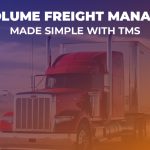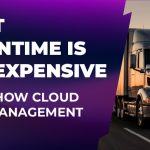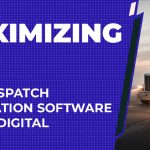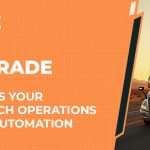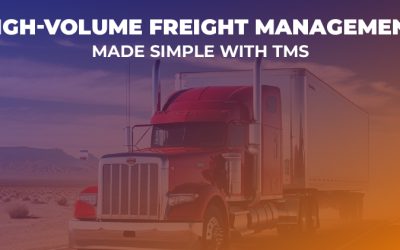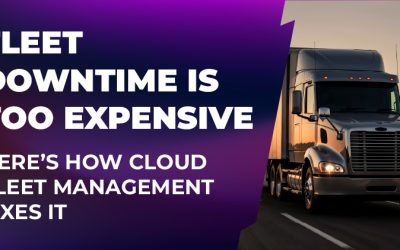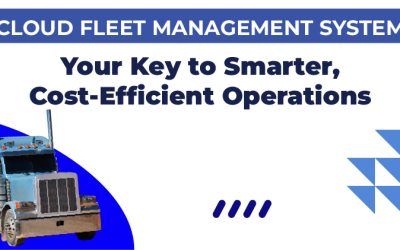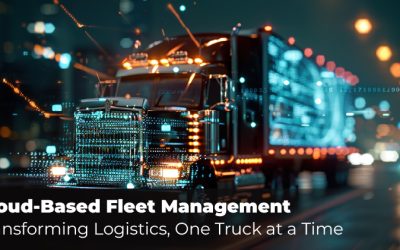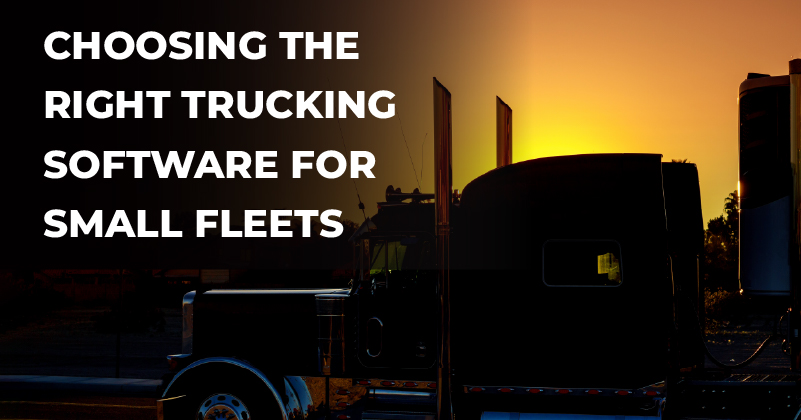
Navigating the realm of trucking software for small fleets can be a daunting task, particularly as your business expands. As you oversee numerous vehicles, manual methods become impractical, and relying on outdated software proves ineffective. To ensure sustained efficiency and profitability during growth, it’s crucial to invest in solutions that automate time-consuming tasks such as fleet maintenance, routing and dispatch management, and safety protocols. This comprehensive guide outlines seven key factors to help you in choosing the right trucking software for small fleets to elevate your business’s efficiency, productivity, and profitability.
Understanding Small Fleet Management Needs
Before delving into trucking software, it’s essential to assess your fleet’s specific requirements. Consider the following crucial areas:
- Fleet maintenance and asset tracking and monitoring
- Transportation management system (TMS) and load board management
- Routing and dispatching
- Driver experience and workflow management
- Safety and risk mitigation
- Compliance and Electronic Logging Devices (ELD) management
By evaluating these aspects, you can pinpoint the functionalities your software solution must address to facilitate seamless operations.
Key Considerations When Selecting Trucking Software for Small Fleets
-
Essential Features
Your chosen software should boast a robust array of features to fulfill your fleet management needs. These may include:
- Telematics
- GPS tracking
- Maintenance alerts
- Driver scorecards
- Compliance monitoring
- Electronic logging
- Customized reporting
Prioritize solutions that integrate these critical features into a unified platform for streamlined management.
-
Cloud-based vs. On-premises Solutions
Consider whether a cloud-based or on-premises solution best aligns with your operational requirements. While cloud-based systems offer flexibility and real-time data access, on-premises solutions may be preferable for companies with existing infrastructure investments.
-
User-friendly Implementation
Opt for a software solution characterized by intuitive usability, facilitating seamless navigation for both office staff and drivers. Assess the ease of installation and training requirements, and inquire about vendor-provided resources for onboarding and support.
-
Integration with Existing Systems

Ensure compatibility with your current software ecosystem by selecting a solution that seamlessly integrates with legacy applications such as accounting and payroll systems. Verify native integration capabilities and inquire about API customization options for tailored connectivity.
-
Scalability
Future-proof your investment by choosing a software solution to accommodate your fleet’s growth. Confirm whether the provider offers scalable pricing tiers and assess any limitations on vehicle or driver management.
-
Vendor Reputation and Support
Prioritize reputable vendors with a track record of quality service and customer support. Utilize software review platforms and industry recommendations to evaluate vendor credibility, and scrutinize contract terms to ascertain support provisions and contract flexibility.
-
Budget Considerations
Evaluate costs holistically, factoring in both upfront expenses and potential long-term savings from operational efficiencies. Account for hidden fees and consider the return on investment offered by enhanced productivity and growth opportunities.
Choosing the Right Solution for Your Fleet
Selecting the optimal trucking software is pivotal in enhancing the efficiency, productivity, and profitability of your fleet operations. At TMS-Digital, we understand the diverse needs of small fleets and offer comprehensive solutions tailored to streamline fleet maintenance, safety protocols, compliance, and more. Empower your business with our AI-powered fleet management software, designed to accelerate growth and drive positive outcomes. Discover how TMS-Digital can revolutionize your fleet operations and propel your business toward success.
